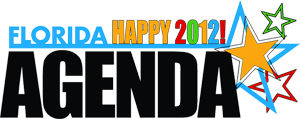By Tom Bonanti
Over 80% of all Americans will experience low-back pain at some point in their lifetime. Many of these people will miss work and incur sizeable medical expenses. If you have poor posture, sit most of the day and are overweight, you are definitely a candidate.
A healthy, pain-free back is often something you take for granted until an injury occurs. You don’t have to be a trainer or sports doctor to realize that taking a few preventative measures each day can keep your back strong and healthy.
Training your abdominal muscles regularly not only helps you achieve a six pack, it can also strengthen your low back. Weak abs are the root of many lower-back problems, ranging from acute spasms to chronic low-back pain. Flabby, out of shape abs force the low-back to work harder in a variety of strenuous and mundane activities, straining the supporting musculature and ligaments of the spine.
Weak abs combined with excessive abdominal weight (a big gut!) can lead to an exaggerated lumbar lordotic curve (sway back). This, in turn, can cause postural problems while sitting, standing or walking, increasing the chance of inflaming and irritating your nerves, discs and muscles.
Weak abs, a big belly and sitting on your butt all day in front of a computer can trigger one hell of a bad backache. Unfortunately, this seems to have become the American way of life – and so has low back pain. On the flip side, toned abs, proper exercise and a low-fat diet can provide a healthy, rock-hard defense against 80% of all lower back ailments.
The abdominal muscles are like other muscles in your body – you should train them hard and then allow them to rest and grow and strengthen outside the gym. Hitting abs hard three times a week is preferable to 100’s of sets of reps day in and day out. Leg lifts, straight leg sit-ups and excessive twists are a prescription for a bad-ass backache.
Crunches will isolate your abs better than anything else, because they tax your trunk flexors (rectus abdominis or “6 pack”) rather than your hip flexors (iliopsoas muscles or deep muscles in your pelvis).
A proper crunch is performed flat on your back, knees bent and legs elevated over a bench, sofa or exercise ball. Place your hands behind your head, but do not interlock your fingers. Cradle your neck and head as you crunch up, bringing your elbows to your knees. Do not pull up with your hands on the back of your head, as this will place undue strain on your seven cervical vertebrae. Do not roll up on your tail bone. Simply crunch bringing your elbows to the knees, pause and contract your gut muscles, and return to starting position. Variations of the crunch can effectively isolate, strengthen and build strong abdominals. The number of sets and reps you do depends on how much time you have and your endurance level.
Both your abs and lower back muscles support your spine; treat these muscles as equals. An imbalance adds stress and strain on the supporting musculature of the spine. If you work your abs, make sure to stretch your lower back while you are down there with simple cat stretches or by bringing your knees up to your chest a few times. Make sure to work your lower back into your regular back routine.
Remember, you can do crunches till the cows come home, but one trip through a drive-thru fast food dive can put a damper on your progress. Combine healthy, low fat eating with cardio and weight training and your sexy defined abs will knock them dead.
For more information on ab training, contact TrainerTomB@aol.com.
Tom Bonanti, is a certified personal trainer and owner of Pump’n Inc gym at 1271 NE 9th Ave., Ft. Lauderdale, FL, Email: TrainerTomB@aol.com Facebook: TrainerTomB. On the Internet at: www.pumpnincgym.com




